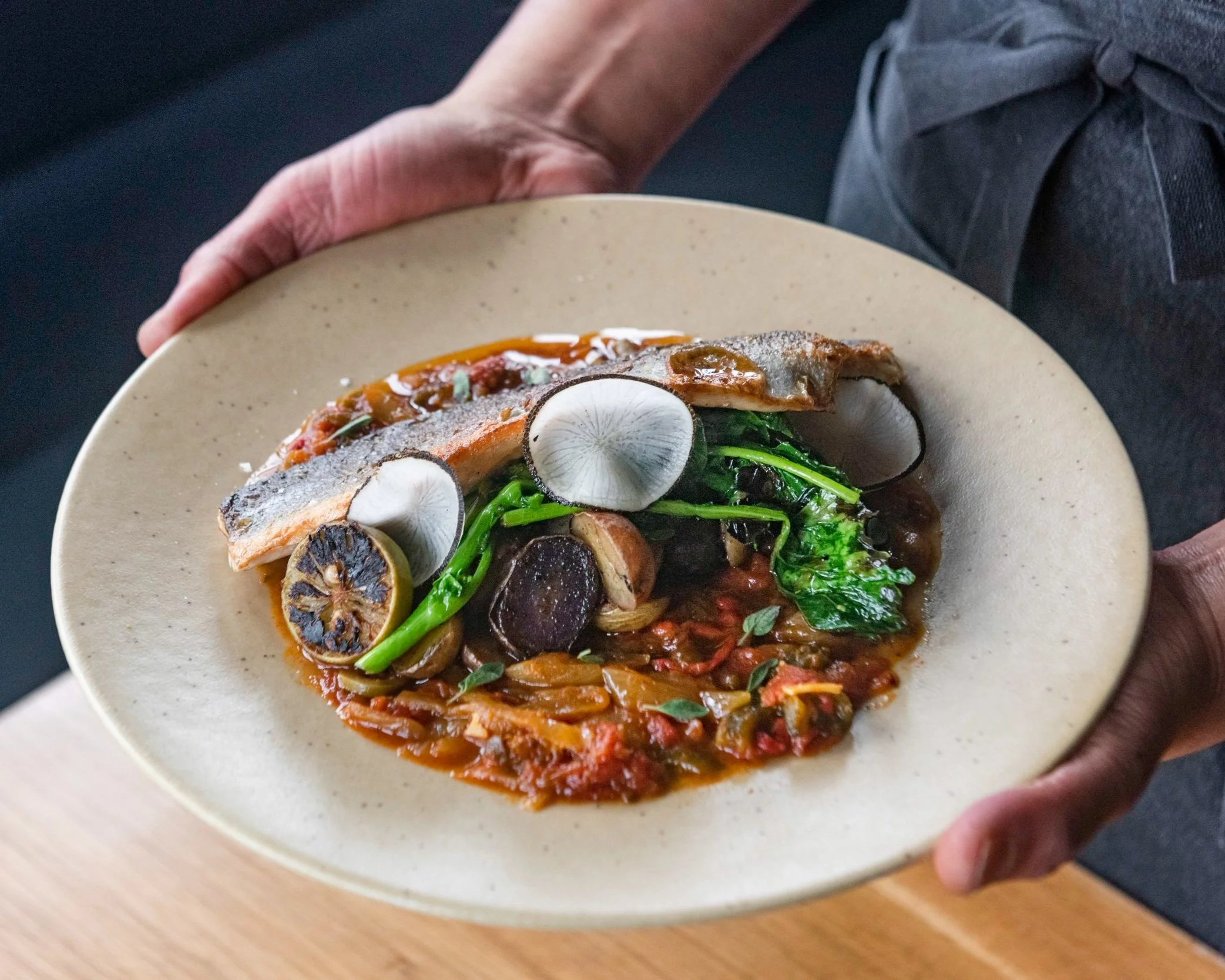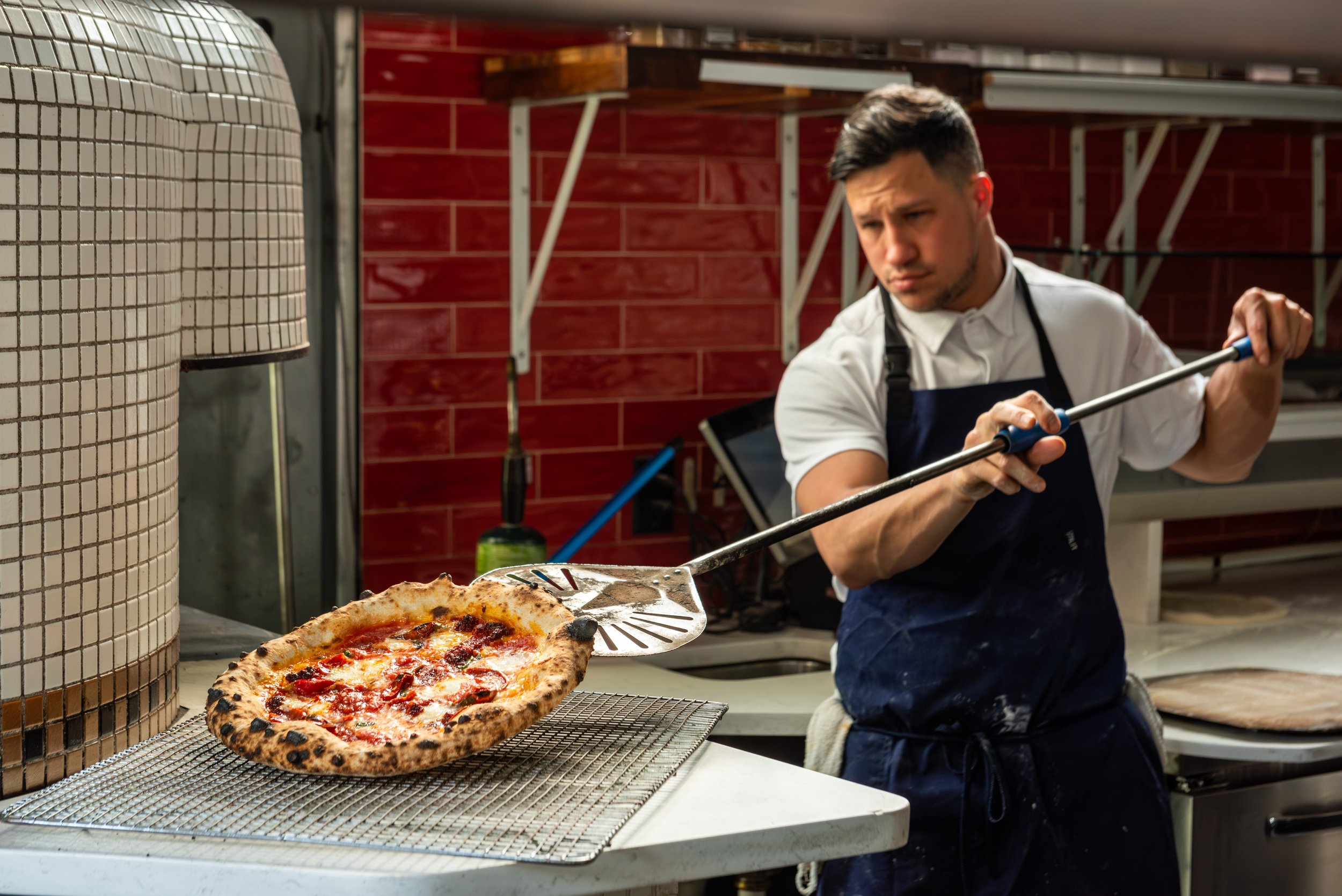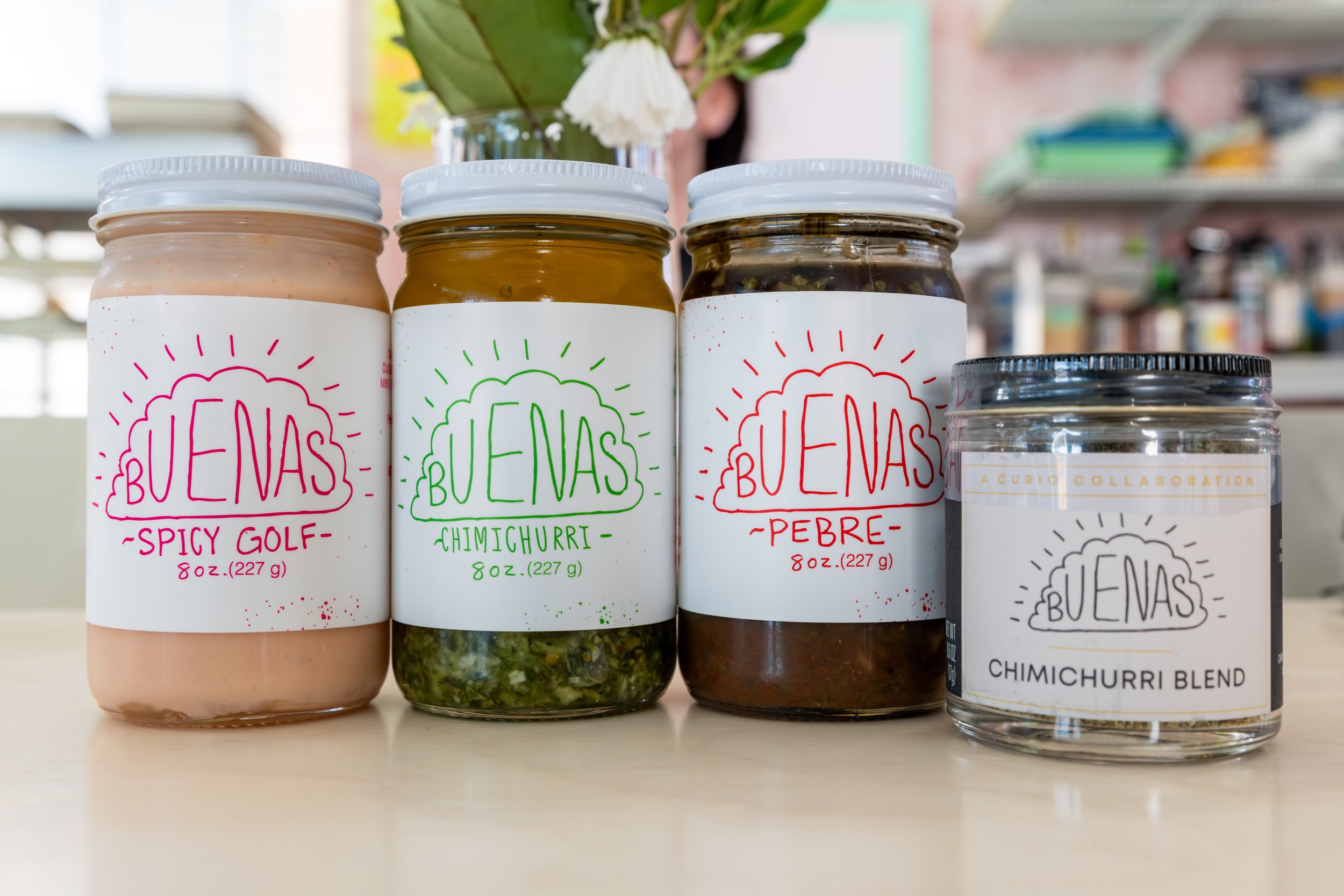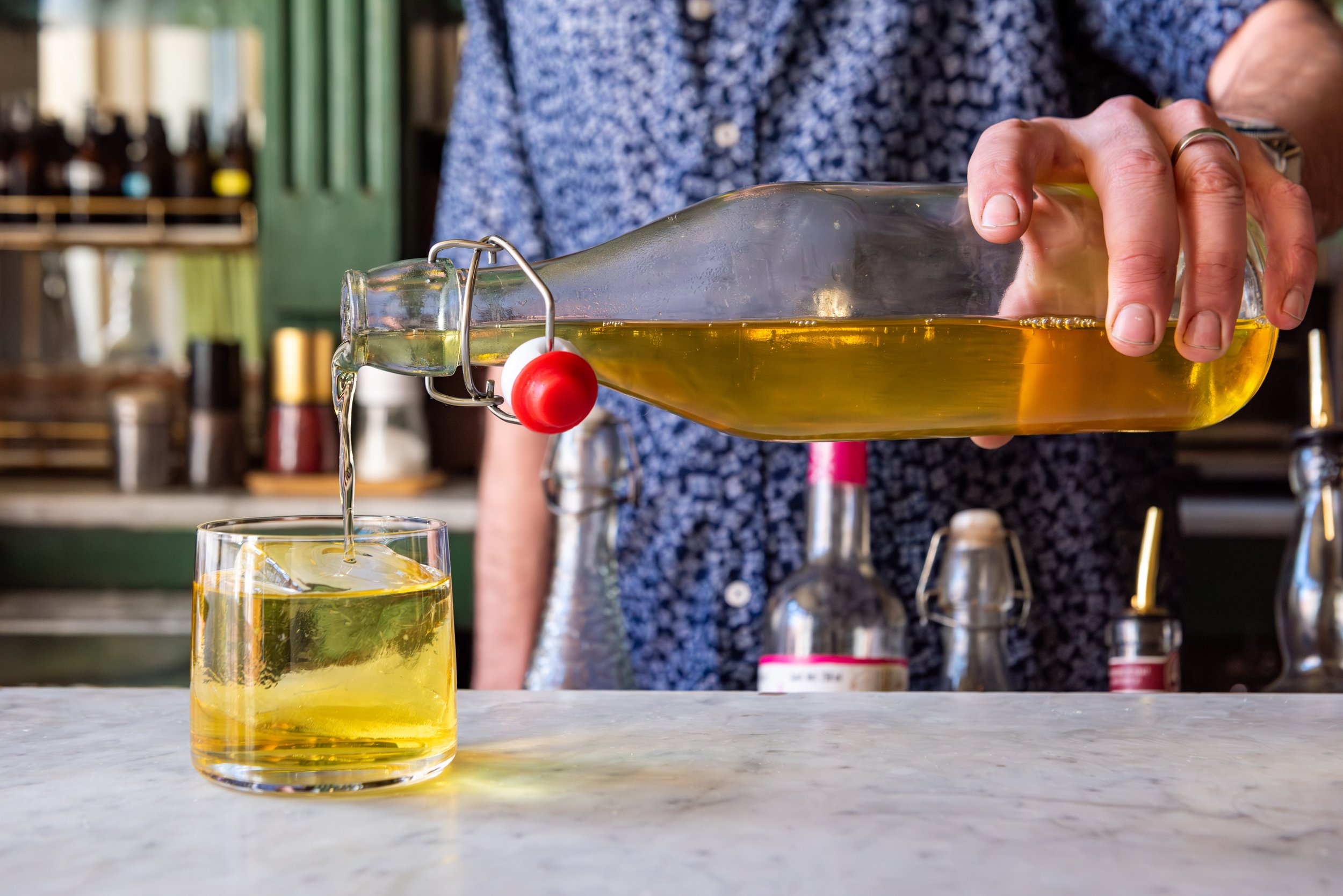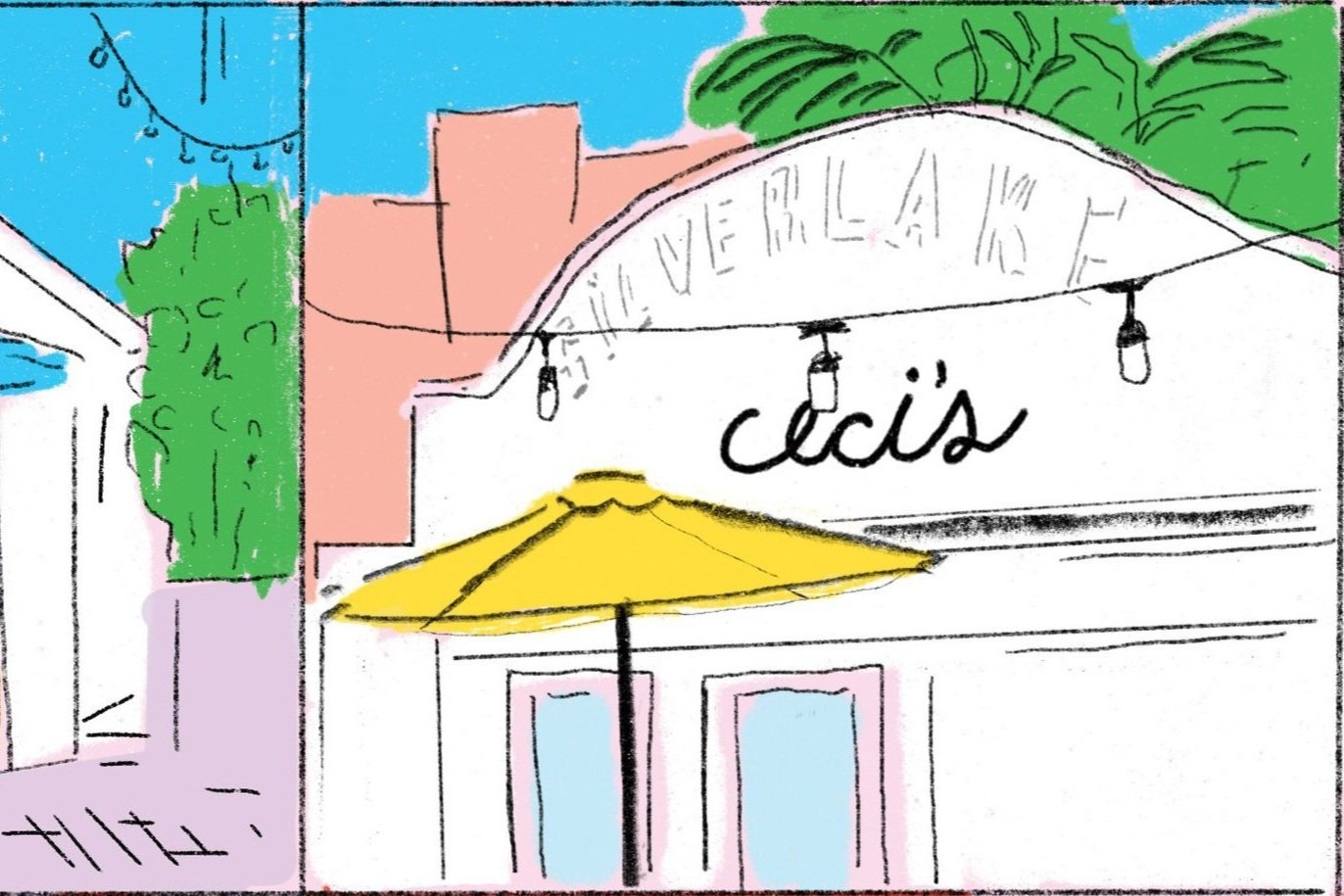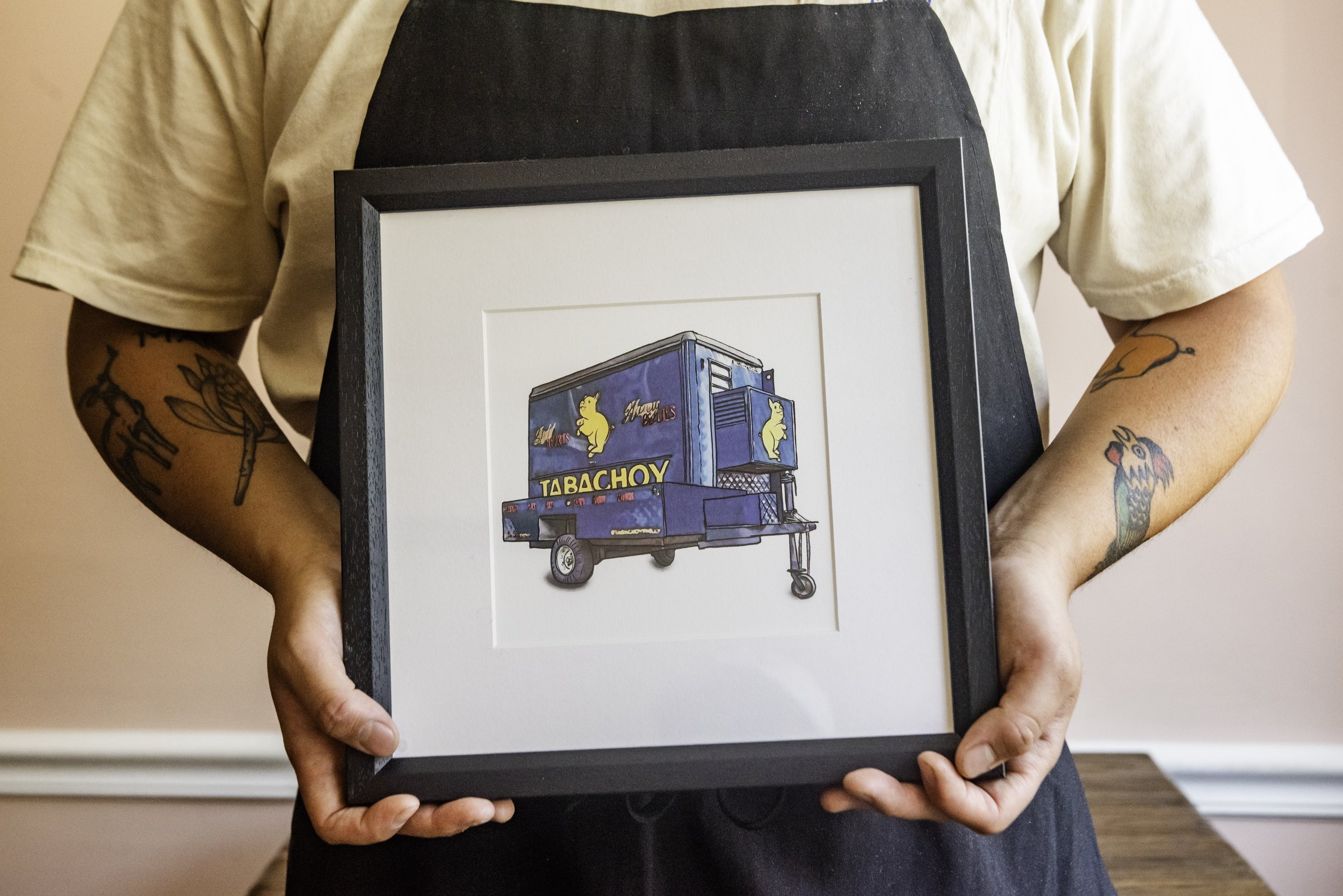Sharing Space: The Dame Collective
One restaurant, 12 concepts. Dame ditches the traditional restaurant model and becomes a home for Portland's pop-ups.
On a corner of Northeast Killingsworth in Portland, two restaurants—Dame and Lil’ Dame—are challenging the traditional restaurant model: creating a more financially and personally sustainable blueprint that works for chefs, owners, and kitchen staff alike.
Together, Dame and its younger sister, Lil’ Dame, make up the Dame Collective, a communal hospitality space where restaurants, dining concepts, and collaborators share the same home, resources, and customer base, with each operating on different days or nights of the week. Depending on when they visit, diners can expect to find anything from sweet and savory bialys to Mexican fonda fare.
“The financial realities of opening brick-and-mortar [restaurants] are becoming pretty impossible. It’s getting harder, so shared spaces are really a good way to do that,” says Dame Collective owner Jane Smith.
First launched in 2016, Dame originally fit the standard sit-down restaurant model, but over time, Smith started to host pop-ups in the Dame space. In 2019, the shift became more permanent with Dame hosting pop-up residencies, with one or two restaurants splitting the schedule and each operating different nights a week.
In its current incarnation, 12 different concepts make up the Dame Collective. At the intimate restaurant, Dame’s meal services alternate between its trademark seasonal fare from Chef Patrick McKee, and reimagined Mexican classics from Chef Luna Contreras of Chelo.
Steps away at pop-up incubator Lil’ Dame, Clandestino offers another take on modern Mexican food and splits the week with McKee, who brings a more casual, “light bites and drinks” alternative to the sister restaurant. Friday and Saturday mornings kick off with unconventional bialys (think cacio e pepe or black sesame and chile crisp) from Chef Adam Thompson’s Bialy Bird paired with Matcha Freak lattes. On top of all that, there’s also a natural wine bottle shop.
“It’s a good way to build community and build more relationships,” says Contreras, who has been doing pop-ups around Portland for the past few years after stepping away from the more traditional brick-and-mortar.
chef luna contreras
Branzino, Salsa Veracruzana, Roasted Potatoes, Blistered Rapini, Black Radish, Oregano
Chefs doing collaborations or pop-ups is nothing new. But with the rash of restaurant closures since the start of the pandemic, pop-ups have become more and more prevalent. Portland, in particular, has seen big growth in its pop-up culture as out-of-work chefs switch from full-time restaurants to long-term residencies, catering, launching consumer packaged goods, or hosting one-off events. By working together, chefs are supporting each other, collaborating and experimenting, while bringing in some extra cash.
But Dame Collective takes it beyond creative collaboration and community-building to a new type of business model.
Each concept handles its own back-of-house operations, while Dame takes care of front-of-house service. Overhead costs are shared, and each restaurant keeps 100 percent of its food sales while Dame keeps beverage sales. Instead of hauling equipment and supplies to different restaurants around town, the residencies all have their own dedicated storage space and refrigeration space that can be left on site. Chefs can stay as long as they want, and those interested reach out to Smith to start conversations and wait for a spot to open up.
By sharing overhead costs and providing front-of-house staff and working space, the collective lowers the threshold to carving out a chef’s space and vision in dining and hospitality, with gaining restaurant experience more accessible and less prohibitively expensive.
“It’s a good model for younger chefs who perhaps haven’t owned a restaurant yet,” says Contreras. “You can be more prepared.”
“There are so many barriers to opening a restaurant, like the crazy leases,” says Adam Thompson of Bialy Bird. “It’s really hard to do on your own…and here, you can pursue your dream without so many barriers in place.”
The division of labor, cost, and time in a collective pop-up model has other benefits too: mental and physical health. A space like Dame Collective gives its collaborators more time and energy for other projects, events, and personal life outside of work, instead of needing to be in the restaurant 24/7.
“The restaurant space can consume you and be horrible for work-life balance,” Contreras says. “This eases the pressure of paying rent and the chaos of staffing so I can focus on other things like events or my hot sauce line. I don’t feel as stressed out or tied down.”
While it has many upsides, it’s not a perfect system. With each chef and kitchen having its own preferred mise en place, utensils are sometimes left in the wrong spot. Closing happens a bit differently for each team. Sharing the compact and close-knit space of a restaurant kitchen with several teams and their bespoke systems of operation and organization can lead to conflict, which is why Smith stresses that honest, open, and respectful communication is key to their operation.
“It doesn’t work if people aren’t collaborative,” she says. “Trust people. Give everyone grace.”
chef adam thompson
Okonomiyaki Bialy
Nitty-gritty details for refining overall operations are also still being ironed out, from trying to provide health insurance to restructuring wage models. Smith also needs to balance the various collaborator’s schedules and desired opening hours.
Customer expectations are another vital part of the recipe. With multiple restaurants operating out of the same space on different days of the week, the opportunity arises for unprepared diners to arrive expecting one menu and getting another. Utilizing social media to promote and share the current pop-ups and residencies, having a clear and up-to-date website, and working with the local press are all ways that Dame Collective makes sense of the shifting, nebulous nature of a collective and its individual parts to the public.
“Communicating with guests about what’s going on where and when is the challenge,” Smith says. “There’s occasionally still confusion or frustration, but we handle it through the lens of hospitality; that no matter who is in the kitchen, they’re going to have a great meal.”
But the public support is still there. Along with dedicated regulars, the here-today-gone-tomorrow nature of pop-ups and residencies, plus constantly-updating menus, draws out diners eager to try new things and avoid missing out.
“Our regulars are really supportive and we see them in for the other chefs’ menus as well, which is very
fun. I’m really grateful that they are willing to show support through all of the iterations of the restaurant,” says Smith.
“I feel lucky and grateful to be a part of this,” says Thompson. “With the leadership we have in Jane [Smith] and Patrick [McKee], they offer so much to us so we can navigate the complexities of sharing a space.”
There may be no one-size-fits-all solution to the problems facing the restaurant industry, but a flexible, changeable model like the Dame Collective offers a blueprint that balances employee wellness, logistics, and operating costs while also fueling creativity, community, and collaboration.


